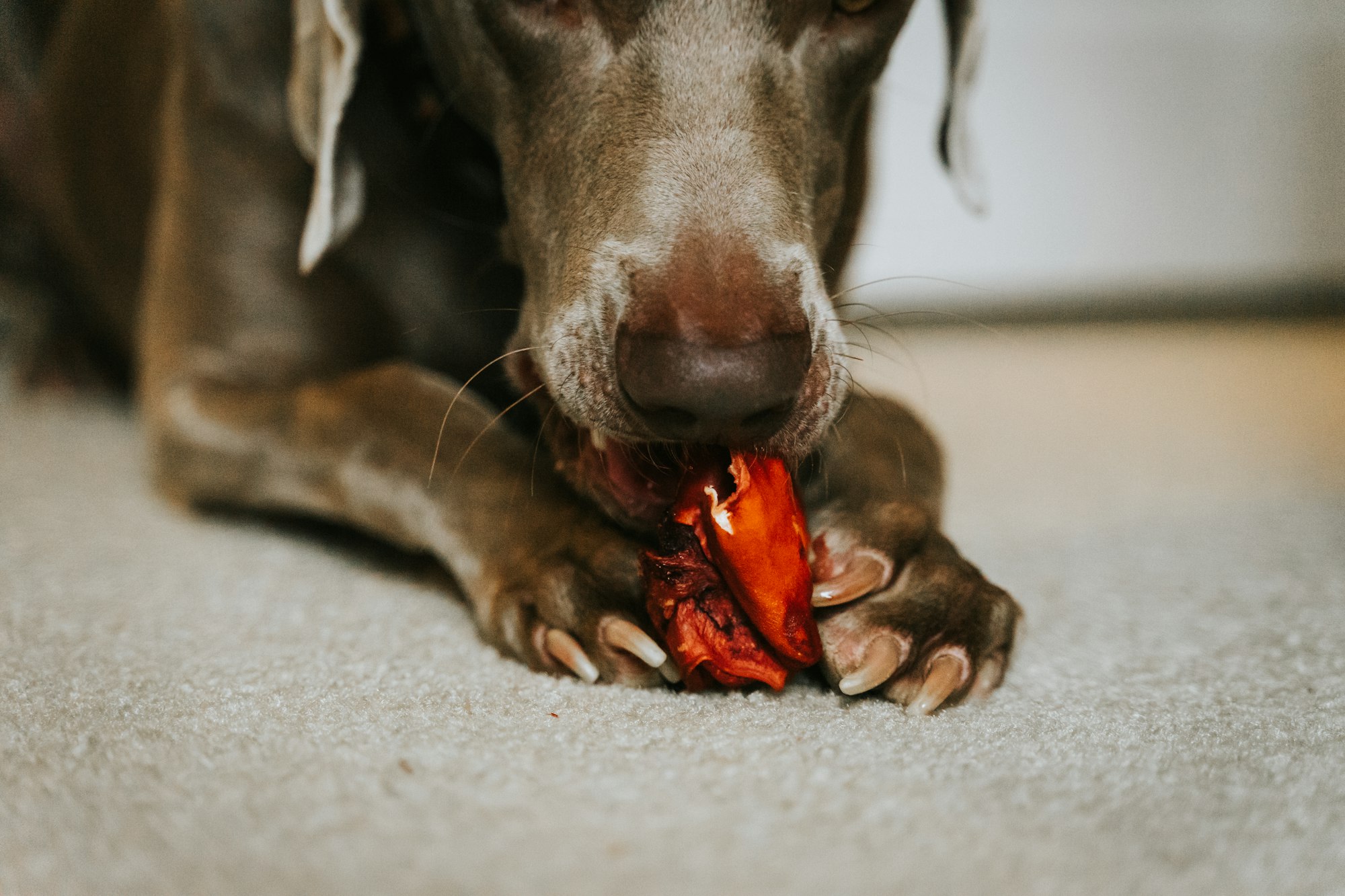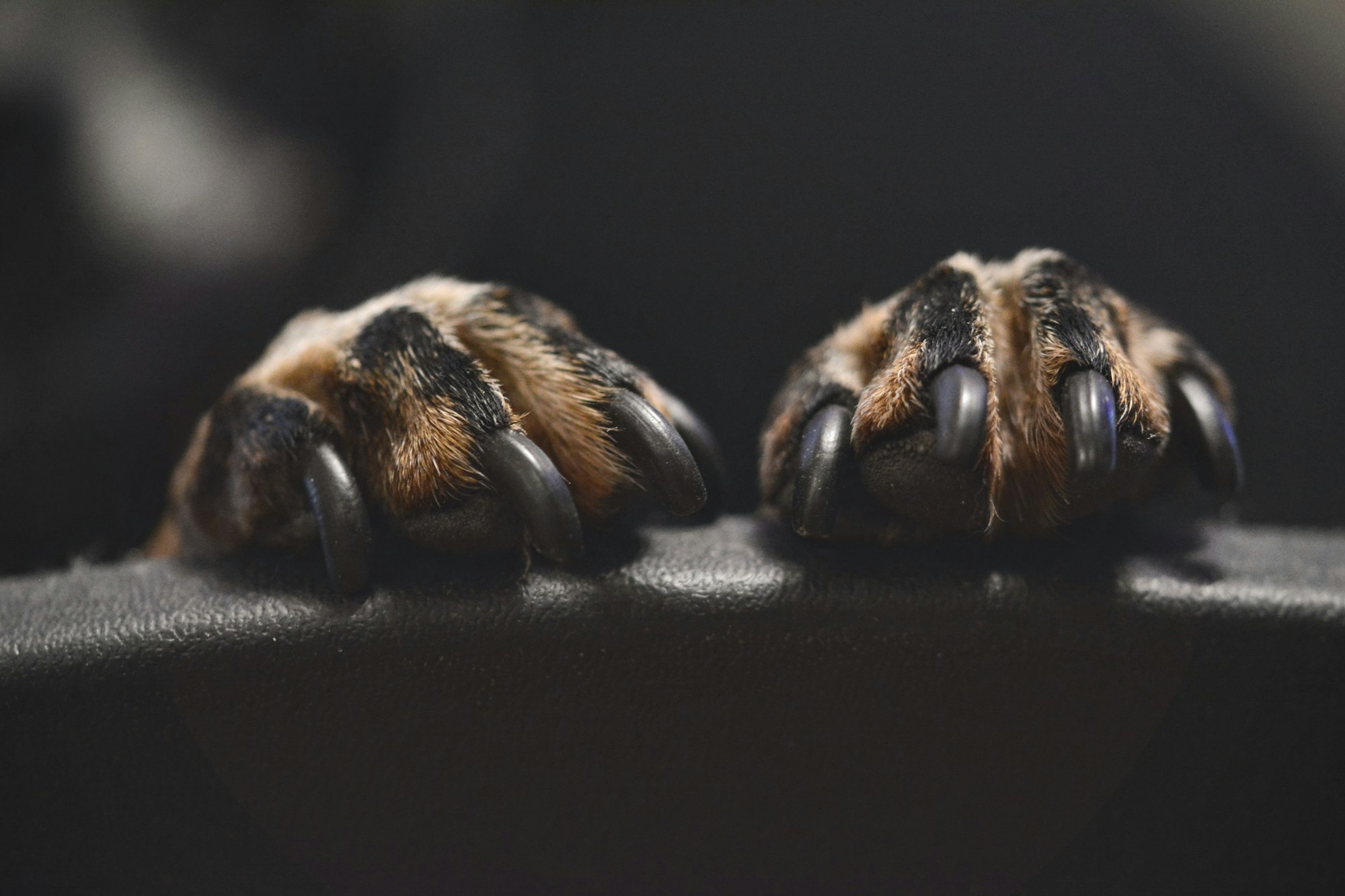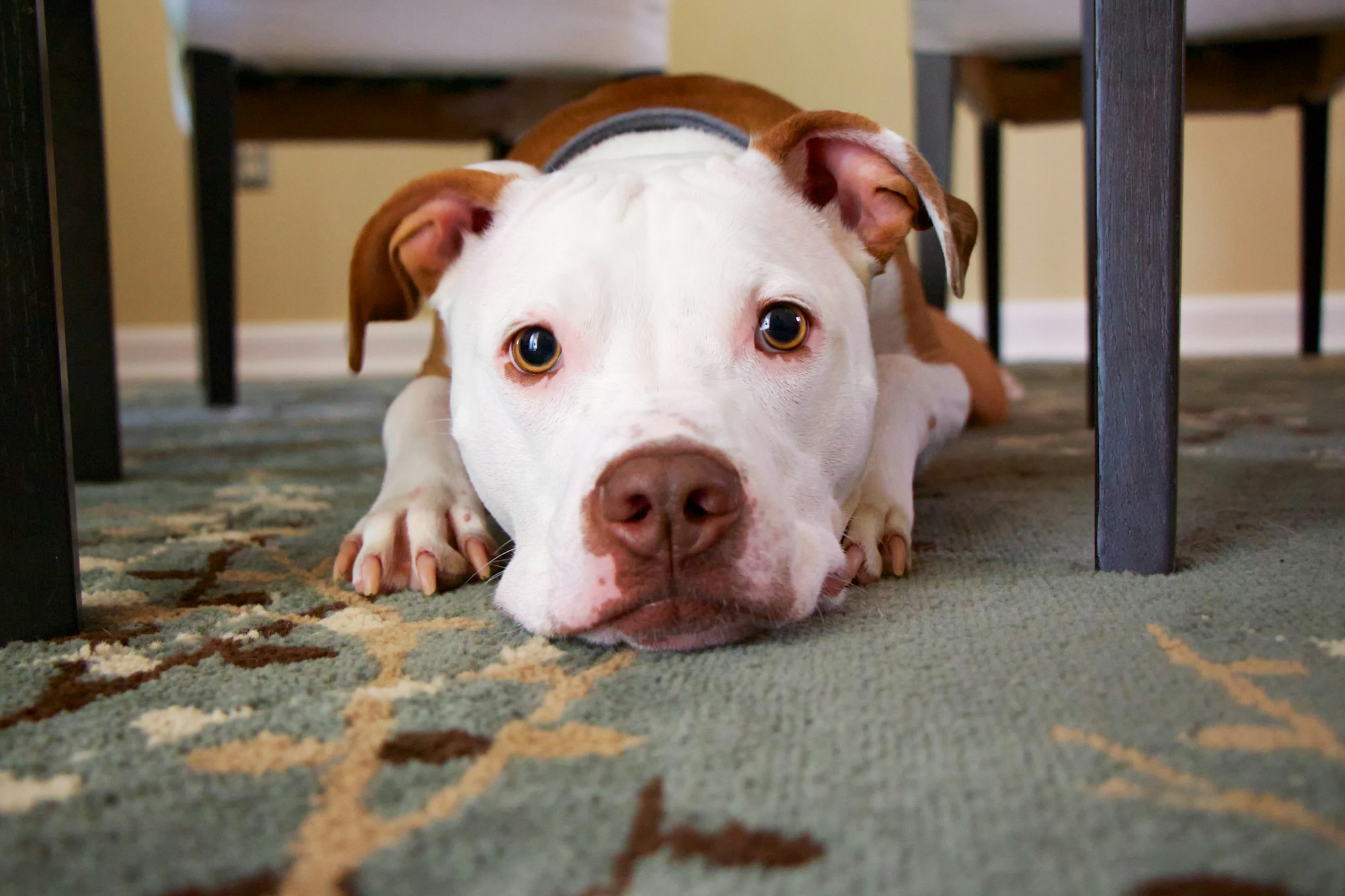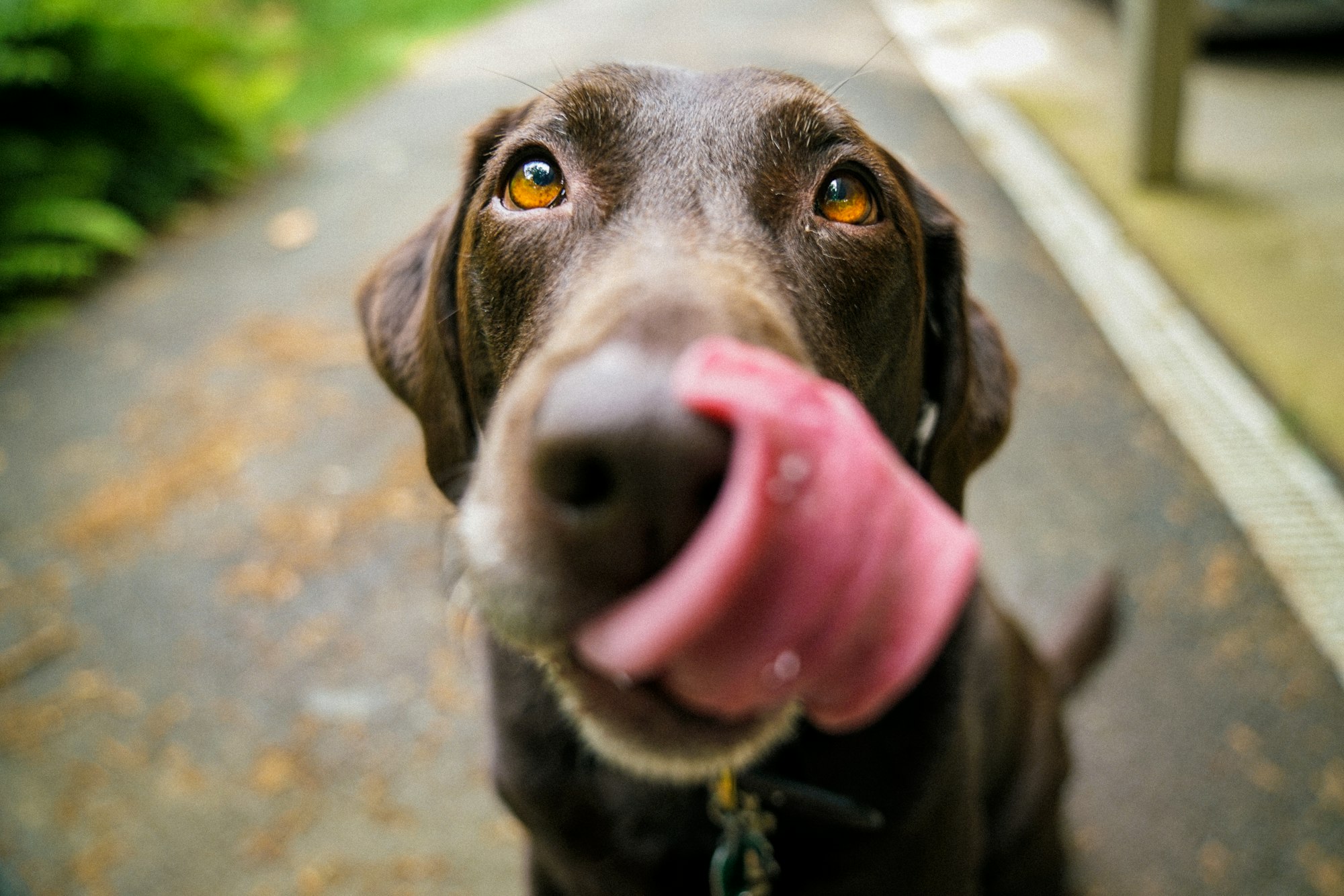Overgrown nails in dogs can be both uncomfortable and detrimental to their overall health. When a dog's nails become too long, it can cause pain, difficulty walking, and even lead to more serious issues such as infections or deformities in the feet. It is essential for pet owners to be aware of the importance of regular nail maintenance for their furry friends.

Why Should You Cut Your Dog's Nails?
Regularly trimming your dog's nails is crucial for their well-being. Overgrown nails can cause discomfort and pain, as they can curl and dig into the paw pad, leading to infections or issues with mobility. long nails can affect the dog's gait and cause joint strain. By keeping your dog's nails properly trimmed, you can prevent these discomforts and ensure their paws are healthy.
Tools Needed for Cutting Overgrown Dog Nails
To safely and effectively cut overgrown dog nails, certain tools are essential. Choosing the right tools can make the process less stressful for both you and your furry companion. We'll discuss the recommended nail clippers or grinders specifically suited for dogs. we will explore other essential tools that can aid in the process and make it more convenient and efficient.

How to Safely Cut Overgrown Dog Nails
Cutting overgrown dog nails requires careful attention and a step-by-step approach to ensure your dog's safety and comfort. We'll provide a detailed guide on safely trimming overgrown dog nails, including steps like preparing your dog, restraining them properly, examining the nails, and making decisions about the cutting technique. We'll also cover the actual process of trimming the nails and discuss the necessary aftercare to promote healing and comfort.
Tips for Cutting Overgrown Dog Nails
In addition to the step-by-step guide, we'll share some valuable tips to make the process of cutting overgrown dog nails easier and stress-free. These tips will cover important aspects such as the frequency of nail trims, handling accidents like cutting the quick, and knowing when it's necessary to seek professional help.
Understanding the best practices for cutting overgrown dog nails is essential for the well-being of your beloved pet. By following the proper techniques and guidelines, you can ensure their nails are maintained at an appropriate length and keep them comfortable, mobile, and healthy.
Why Should You Cut Your Dog's Nails?
Cutting your dog's nails is crucial for their health and well-being. Wondering why should you cut your dog's nails? Well, when a dog's nails become too long, it can cause discomfort and pain while walking or running. Long nails also increase the risk of injury, as they can get caught in carpets, furniture, or other objects. Overgrown nails can affect the alignment of the dog's paws and lead to issues with their posture and joint health.
Tools Needed for Cutting Overgrown Dog Nails
When cutting overgrown dog nails, there are several tools needed for cutting overgrown dog nails that you will need to ensure a safe and efficient process:
- Nail clippers: Invest in a good pair of dog nail clippers specifically designed for cutting overgrown nails. Clippers with a sharp, angled blade are ideal for a clean cut.
- File or grinder: After trimming the nails, use a file or grinder to smooth any rough edges. This helps prevent snagging and discomfort for your dog.
- Treats: It's essential to have a supply of your dog's favorite treats on hand. Rewarding them after each successful nail trimming session will reinforce positive behavior and help make future sessions easier.
- Numbing powder: If your dog has extremely sensitive nails or is fearful of nail trims, a numbing powder can help reduce discomfort. Consult with your veterinarian for a suitable product.
- Styptic powder: Accidents happen, and sometimes you may accidentally cut a nail too short, leading to bleeding. Styptic powder helps stop the bleeding quickly and promotes clotting.
Having these tools needed for cutting overgrown dog nails readily available will ensure a smooth and stress-free process when cutting overgrown dog nails. Remember to take your time, be patient, and always prioritize your dog's safety and well-being.
Which Nail Clippers or Grinders to Use?
Choosing the right nail clippers or grinders is crucial when cutting overgrown dog nails. Here are some options to consider:
- Guillotine-style clippers: These clippers have a hole where you insert the nail, and a blade that slides across to cut the nail. They are easy to use and provide good control.
- Scissor-style clippers: These clippers work like scissors, with two blades that come together to cut the nail. They are suitable for small to medium-sized dogs.
- Nail Grinders: Grinders are electric or battery-operated tools that file down the nail instead of cutting it. They are helpful for dogs with thick nails or for owners who prefer a smoother finish.
- Dremel-style grinders: These grinders have a rotating sanding drum that gradually grinds down the nail. They allow for more precision and control, but some dogs may find the noise and vibration unsettling.
When choosing nail clippers or grinders, consider the size and breed of your dog, as well as your own comfort and experience. Remember to choose tools that are specifically designed for dogs, as human nail clippers or grinders may not be suitable.
Always consult with your veterinarian or a professional groomer if you are unsure about which tool to use or how to safely cut your dog's nails. They can provide guidance and demonstrate the proper technique to ensure your dog's comfort and safety.
What Are the Other Essential Tools for the Process?
To safely and effectively cut overgrown dog nails, you will need a few essential tools. The table below provides a list of the tools required for the process:
| Nail Clippers or Grinders | Choose a suitable tool based on your preference and the size of your dog's nails. Clippers are commonly used, while grinders offer a smoother finish. |
| Styptic Powder or Pencil | This tool helps to stop bleeding in case you accidentally cut the quick of the nail. It contains a clotting agent that aids in the healing process. |
| Nail File or Emery Board | After trimming the nails, a file or emery board can be used to smooth any rough edges or sharp points, ensuring your dog's comfort. |
| Treats or Distractions | Having treats or distractions readily available can help keep your dog calm and cooperative during the nail trimming process. |
| Towel or Blanket | Using a towel or blanket can provide a comfortable surface for your dog to lie on while you trim their nails. It also helps with easy cleanup. |
How to Safely Cut Overgrown Dog Nails
If you've ever wondered how to tackle the hairy situation of cutting overgrown dog nails, look no further. In this guide, we'll show you how to safely trim those talons step by step.

Step 1: Preparing Your Dog
- Begin by making sure your happy dog is calm and relaxed. Find a quiet and comfortable space for the nail-cutting session. Gently handle your dog's paws and get them accustomed to having their nails touched. This will help reduce any anxiety or fear.
- Have treats nearby to reward your dog for their cooperation during the process. Positive reinforcement can help make nail cutting a more positive experience for your dog.
- Inspect your dog's nails and check for any signs of infection, injury, or abnormal growth. If you notice any issues, consult a veterinarian before proceeding.
- Keep a styptic powder or cornstarch on hand in case you accidentally cut the quick of the nail and it starts bleeding. This can help stop the bleeding quickly.
- Use a non-slip surface or have someone hold your dog securely to prevent any accidental slips or falls during the nail cutting process.
Step 2: Restraining Your Dog
When restraining your dog for nail trimming, it's important to ensure their safety and minimize stress. Here are the steps to follow:
- Prepare a quiet and comfortable environment with good lighting.
- Secure a non-slip surface for your dog to stand or lie on, such as a rubber mat.
- Approach your dog calmly and gently. Speak soothingly to reassure them.
- If your dog is small or calm, sit on the floor and place them in your lap. Hold them securely but gently, ensuring their comfort.
- For larger dogs or those who may be more anxious, you can use the "hug method." Stand behind your dog and gently lift their front legs off the ground, making them sit back on their hind legs. Embrace their body securely to prevent any sudden movements.
Remember, it's essential not to restrain your dog too tightly or forcefully. This may cause discomfort or separation anxiety, making the process more difficult.
Restraining your dog properly during nail trimming helps ensure their safety and comfort. By creating a calm environment and using gentle techniques, you can make the experience less stressful for both you and your furry friend, leading to a successful nail trimming session.
Step 3: Examining the Nails
- Begin by closely inspecting your dog's nails to evaluate their current condition. Take note of any overgrowth, such as nails that are excessively long or noticeably curved. Additionally, check for visible cracks or splits in the nails.
- Check for debris - Thoroughly examine the nails for any dirt, debris, or foreign objects that might be lodged in them. It is crucial to ensure that the nails are properly cleaned before proceeding with the trimming process.
- Observe the quick - Pay attention to the location of the quick, which is the pink part within the nail containing blood vessels and nerves. This observation enables you to determine the appropriate amount of nail to trim without causing pain or bleeding.
- Look for signs of infection - Inspect the nails for any indications of infection, such as redness, swelling, or discharge. If you notice any abnormalities, it is advisable to consult a veterinarian before attempting to trim the nails.
- Assess the nail thickness - Take note of how thick your dog's nails are. Thick nails might require more force or a different type of cutting tool for effective trimming.
- Check for any abnormalities - Look for any abnormal conditions in the nails, such as ingrown nails or irregular shapes or textures. These abnormalities may require special attention or professional assistance for resolution.
- Note any discomfort or pain - Pay careful attention to your dog's behavior during the examination to determine if they are experiencing any signs of discomfort or pain. This ensures a safe and pain-free nail trimming experience.
Step 5: Trimming the Nails
- Hold the dog's paw firmly but gently to provide stability.
- Identify the quick, the pink part of the nail that contains blood vessels and nerves. Be cautious not to cut into the quick to avoid pain and bleeding.
- Choose the appropriate tool for trimming, such as a guillotine-style nail clipper or a rotary grinder. Ensure the tool is clean and sharp to create a clean cut.
- For dogs with white or light-colored nails, start by making small, straight cuts to avoid cutting into the quick. Examine the cut end of the nail and look for a small black dot, indicating the presence of the quick. Adjust your cutting technique accordingly.
- For dogs with dark-colored nails, trim small amounts at a time and use a gradual approach. Pause and examine the cut end frequently to avoid cutting into the quick.
- Trim the nails at a slight angle, avoiding cutting straight across. This will help prevent the nail from splitting or becoming sharp.
- After each cut, use a file or grinder to smooth any rough edges and prevent snagging or scratching.
- If your dog becomes anxious or restless, take breaks between trimming each nail to avoid overwhelming them.
- Reward your dog with treats and praise throughout the process to create a positive association with nail trimming.

Step 6: Final Steps for Aftercare
Step 6: Final Steps for Aftercare when cutting overgrown dog nails can help ensure the comfort and well-being of your furry friend. Follow these steps to complete the process:
- Check for any bleeding: After trimming the nails, inspect each nail for any signs of bleeding. Apply gentle pressure to the nail with a clean cloth or cotton ball to stop the bleeding if necessary.
- Apply a styptic powder or solution: If you accidentally cut the quick and there is bleeding, use a styptic powder or solution to help stop the bleeding. Dip a cotton ball in the powder or apply a small amount of the solution directly to the nail.
- Maintain a calm environment: After the trimming is complete, provide a calm and quiet atmosphere for your dog. Using a soothing and reassuring tone, praise your dog for their cooperation during the process.
- Inspect the nails for any abnormalities: Take a closer look at the trimmed nails to ensure there are no jagged edges or sharp points that could cause discomfort. If necessary, use a nail file or emery board to smooth out any rough edges.
- Offer treats or rewards: Reward your dog for their patience and good behavior during the nail trimming process. Offer treats or engage in a favorite activity to make the experience positive and reinforce their cooperation.
- Monitor for any signs of discomfort: Keep an eye on your dog in the hours following the nail trimming to watch for any signs of pain or discomfort. If your dog continues to exhibit discomfort or if the nails appear too short, consult with a veterinarian.
- Remember, every dog is different, and it's important to adapt the aftercare process to suit their individual needs. By providing proper aftercare, you can help your pup stay happy and healthy after trimming their overgrown nails.
Tips for Cutting Overgrown Dog Nails
Here are some tips for cutting overgrown dog nails:
- Prepare your tools. Make sure you have a good quality nail clipper specifically designed for dogs.
- Get your dog comfortable. Find a quiet space where your dog feels relaxed. You may need to gradually introduce them to nail trimming if they are anxious or fearful.
- Inspect the nails. Carefully examine your dog's nails to determine the extent of overgrowth. Look out for signs of sensitivity or pain.
- Trim the nails gradually. Take small increments off the nails rather than cutting them too short all at once. This will prevent accidentally cutting into the sensitive quick.
- Use a steady hand. Keep a firm grip on your dog's paw and use gentle but firm pressure when clipping the nails.
- Watch for signs of discomfort. If your dog shows signs of distress or discomfort, such as pulling away or yelping, stop immediately and seek professional help.
- Reward your dog. After each successful nail trimming session, reward your dog with praise, treats, or playtime to create a positive association with the experience.
- Maintain regular nail trimming. To prevent nails from becoming overgrown again, establish a routine of regular nail trimming sessions every few weeks or as recommended by your veterinarian.
How Often Should You Trim Your Dog's Nails?
When it comes to trimming your dog's nails, the frequency depends on several factors:

- Some dogs have nails that naturally grow faster than others. It is important to monitor your dog's nails and trim them as needed.
- Activity level: Dogs that are more active may naturally wear down their nails through exercise and walking. If your dog is less active or primarily stays indoors, you may need to trim their nails more frequently.
- Nail length: The length of your dog's nails can also determine how often they need to be trimmed. If your dog's nails are already long, you may need to trim them more frequently to maintain an appropriate length.
As a general guideline, most dogs require nail trimming every 4-6 weeks. Individual needs may vary, so it is important to observe your dog's nails regularly and adjust the frequency accordingly. If you notice that their nails are touching the ground or causing discomfort while walking, it is a sign that they need to be trimmed more often.
What to Do If You Accidentally Cut the Quick?
If you accidentally cut the quick while cutting your dog's nails, remain calm and follow these steps on what to do.
- Apply gentle pressure with a clean cloth or styptic powder to stop any bleeding.
- If the bleeding does not stop after a few minutes, seek veterinary assistance immediately.
- Keep your dog calm and immobile during this time to prevent further injury from occurring.
- Do not punish or scold your dog for the accident, as this can cause stress and anxiety.
- Monitor the nail for signs of infection, such as redness, swelling, or discharge.
- Keep the area clean and, if necessary, apply an antibacterial ointment.
- It is important to prevent your dog from licking or chewing the injured nail.
- Use a protective covering, such as a dog boot or sock, to prevent further injury or contamination.
- Watch for any signs of pain or discomfort in your dog, and consult with a veterinarian if necessary.
When Should You Seek Professional Help?
When should you seek professional help for cutting overgrown dog nails?
If you are uncomfortable or inexperienced in trimming your dog's nails, it is important to seek professional help. It is best to consult a professional if your dog's nails are extremely long, curved, or causing your dog pain. Additionally, if your dog becomes anxious or fearful during nail trimming, a professional can provide a calm and safe environment for the procedure.
Professional groomers or veterinarians have the necessary expertise and equipment to handle difficult nail trims.
They can ensure that the nails are trimmed to an appropriate length without causing any harm. In some cases, they may even recommend sedation or anesthesia to safely trim the nails.
Remember, if you attempt to trim your dog's nails and accidentally cut the quick, causing bleeding, you should seek professional help to properly treat the injury.
It is always better to be cautious and seek professional assistance to avoid any potential harm to your dog.
In summary, when faced with overgrown dog nails and uncertainty about the trimming process, it is advisable to seek the assistance of a professional groomer or veterinarian.
They can provide the necessary expertise and ensure the pet safety and well-being of your dog during the nail trimming procedure.
Some Facts About How to Cut Overgrown Dog Nails:
- ✅ Overgrown dog nails can cause discomfort, pain, and health issues for dogs.
- ✅ Trimming a little bit of the nail at a time on a regular basis encourages the quick (nail's blood vessel and nerve ending) to recede.
- ✅ To trim overgrown dog nails, it is important to make the dog comfortable with the nail-trimming tools.
- ✅ Regular nail trimming is necessary to prevent overgrown nails and related problems such as splaying of the toes and pressure on the foot and leg structure.
- ✅ Dog owners need to be patient and consistent when trimming overgrown dog nails, and should always offer rewards and treats to make the experience positive.
Frequently Asked Questions
How to tell if your dog's nails are too long?
It's important to keep an eye on your dog's nails to prevent them from getting too long. Here are some signs that indicate your dog's nails are too long:
- Nails touching the ground when the dog is standing. - Difficulty in walking or running due to long nails. - Split nails or nails that are broken or damaged. - Overgrown quickly visible beyond the nail. - Pain or discomfort while walking.
What are the risks of overgrown dog nails?
Overgrown dog nails can pose several risks to your dog's health and well-being, including:
- Splaying of the toes and pressure on the foot and leg structure. - Increased risk of tendon injuries. - Deformed feet and foot structure. - Nail infections and pain. - Potential difficulty in mobility and pain while walking or running. - Risk of the nail getting torn off, causing bleeding and pain.
How do I teach my dog to tolerate nail trims?
Practice desensitization training: Gradually introduce the nail-trimming tools and rewards in a positive and relaxed environment. - Offer treats and rewards: Give your dog treats before and after each trimming session to make the experience more positive. - Train with the help of a second person: Having an extra set of hands to comfort and distract your dog can make the process easier.
Can I cut my dog's nails too short?
It is important to avoid cutting your dog's nails too short to prevent injury and discomfort. Here's how to trim safely:
- Trim small bits at a time: Take off small sections incrementally to avoid accidentally cutting the quick. - Identify the quick: In light-colored nails, the quick appears as a pinkish section. For dark nails, it may be harder to locate, so trim conservatively. - Use caution with the outer shell: Do not chop off large sections of the nail at once to avoid hurting your dog.
When should I seek professional help for trimming my dog's nails?
If you are unsure about trimming your dog's nails or your dog becomes anxious or aggressive during the process, it is best to seek help from a veterinary professional or groomer. They have the experience and tools to care for your dog's nails safely and comfortably.






